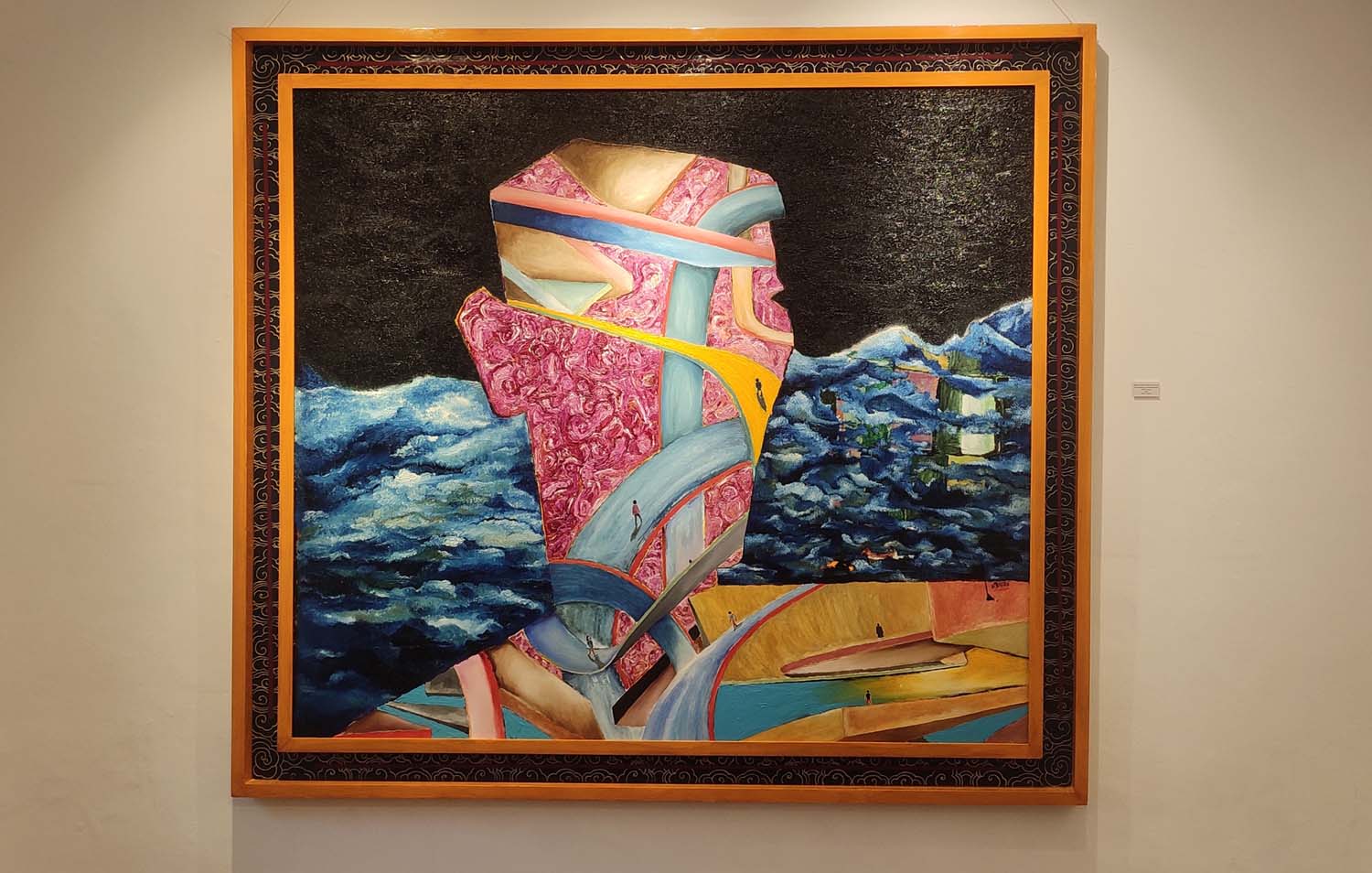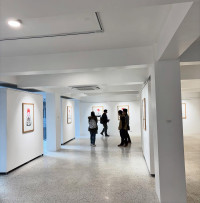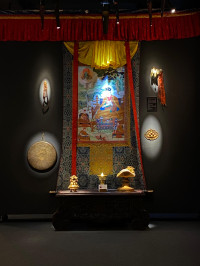Arts
The world through Priyam Pradhan’s eyes
‘The Mind of the Maker’ takes us on a journey through the artist’s world and, in the process, our own.
Shreya Sanu Gautam
‘The Mind of the Maker’ is the second solo exhibition by the artist Priyam Pradhan. He first began experimenting with art as a tattooist in 2015. However, as he began exploring the depths of art—and his own being—he realised art to be an inseparable part of himself.
Pradhan’s ‘The Mind of the Maker’ is currently being exhibited at Siddartha Art Gallery. As soon as you enter the exhibition, the first artwork that greets you is ‘Has Man a Future?’. The artwork does a great job of setting the mood for the exhibition and gives visitors a glimpse of the worlds they will enter. The bottom of the artwork features a lone married woman sleeping on a couch, whereas at the top is a peculiar man with six arms performing what looks like puppetry. Below it, a white silhouette resembling a Hindu goddess is sitting on a crane. To the right of the artwork is a man smoking a pipe, his face elevated. To the left is a TV where someone seems to be hosting some show. There is a lamp on top of the TV and, over it, is a poster of a woman. There are also engravings that read—“THE GOOD SIDE” and “7 BILLION PEOPLE DIDN’T DIE TODAY.”
If you look at the artwork long enough, giving it the time it deserves, you will find yourself lost in its maze, which seems to represent the artist’s mind. This theme continues in the exhibition’s other artworks. ‘Journey to the End of the Night’, ‘Price of Insanity’, ‘Cuckoo Cocoa’, ‘O’ Ganesha’, ‘Abstract Society’, ‘Favorite Game’, ‘Opium’, and all the other artworks in the exhibition seem like an invitation for us to gaze and ponder at Pradhan’s meditations on religion, self-awareness, beliefs, games, drama, dreams, and illusions.
The artworks in this exhibition are abstract, and the beauty of this genre is the freedom it allows viewers to interpret the works however they choose. When we look at an abstract painting, we try to derive meaning from it. And when we fail to do so, we reason it with feelings. Yet, at the same time, we cannot help but wonder about the person who created it and think about the thoughts that could have passed in the artist’s mind. One cannot deny that it is hard—if not impossible—to separate the art from the artist.

It is quite difficult to comprehend where Pradhan is really coming from in some of his artworks. In the beginning, he takes us inside his mind, and the next moment, we are in outer space. In ‘Mind Control’, ‘The Only Dance There Is’ and ‘Surrounded by Idiots’, we can see the influence jazz has on the artist, while in ‘Cuckoo Cocoa’, the artist has drawn inspiration from the movie ‘French Dispatch’. ‘Love Beings’ features the Hindu god Ganesha and a fairy, whereas ‘Colors Out of Space’ features a man sitting in front of a mirror and watching what seems to be some variation of his own reflection.
In our bid to interpret abstract artworks, we tend to jump from the creator’s mind to something else—a fairytale, the galaxy, the heaven—to our own, only to realise that our minds have a lot in common. This is what Pradhan’s exhibition does: the moment you step inside the gallery, you have entered the maker’s mind, and you find your way through it, relying on your experiences and understanding.
When I got to share a few exchanges with the artist, I asked him why horses feature in many of his artworks and if the animals signify anything in particular. He brushed off my question, saying, “Sometimes, I use them to tell my story symbolically.” In the end, I was left to figure out the meaning of the horses myself.
Nevertheless, now, we know for sure that Pradhan relies on symbolism in his artworks. So, if you thought you found out the meaning behind the elements in his artworks, you might have been right. And, if you perceived the artworks as just plain thoughts inside the artist’s mind, you might have been right, too. It is natural, sometimes, to find what goes on inside the other person’s mind nonsensical. Whatever it is, I do not think we ever really know what goes in the maker’s mind—even if we are presented with discrete images.
In the end, if you perceive art solely as a means of aesthetics, this exhibition is for you. If you perceive art as a portal to guide you through life, this exhibition is for you. If you are new to art and do not know where to begin, this exhibition is for you. And this exhibition is for you if you simply enjoy art, art for art’s sake.
‘The Mind of the Maker’ will be on display until January 12 at Siddhartha Art Gallery in Baber Mahal Revisited, Kathmandu.




 5.17°C Kathmandu
5.17°C Kathmandu

%20(1).jpg&w=200&height=120)








